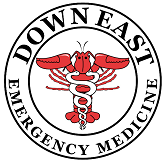Journal Club - COVID-19 Therapeutics
/COVID vaccines have dominated the media and our recent efforts to combat the SARS-CoV-2 virus. It will likely take some time, however, until we reach herd immunity. To help curb the severity of disease, the medical community continues to investigate other therapeutics. By examining the virus life cycle and our immune system’s response to it (both protective and destructive), we may be able to develop anti-viral and immune therapy that counteracts the cytokine storm and leads to acute respiratory distress syndrome, respiratory failure, shock, organ failure and potentially death. In this journal club, we reviewed the use of steroids and convalescent plasma for the treatment of patients with SARS-CoV-2.
Read More


















